Romain Gauthier Prestige HMS Stainless Steel With Rare Henbury Meteorite Dial
Stainless steel is not a material that Romain Gauthier generally works in. And that makes sense to me: his intensely unique and complicated watches are very rare. Encasing them in precious metal underscores their highly valuable nature.
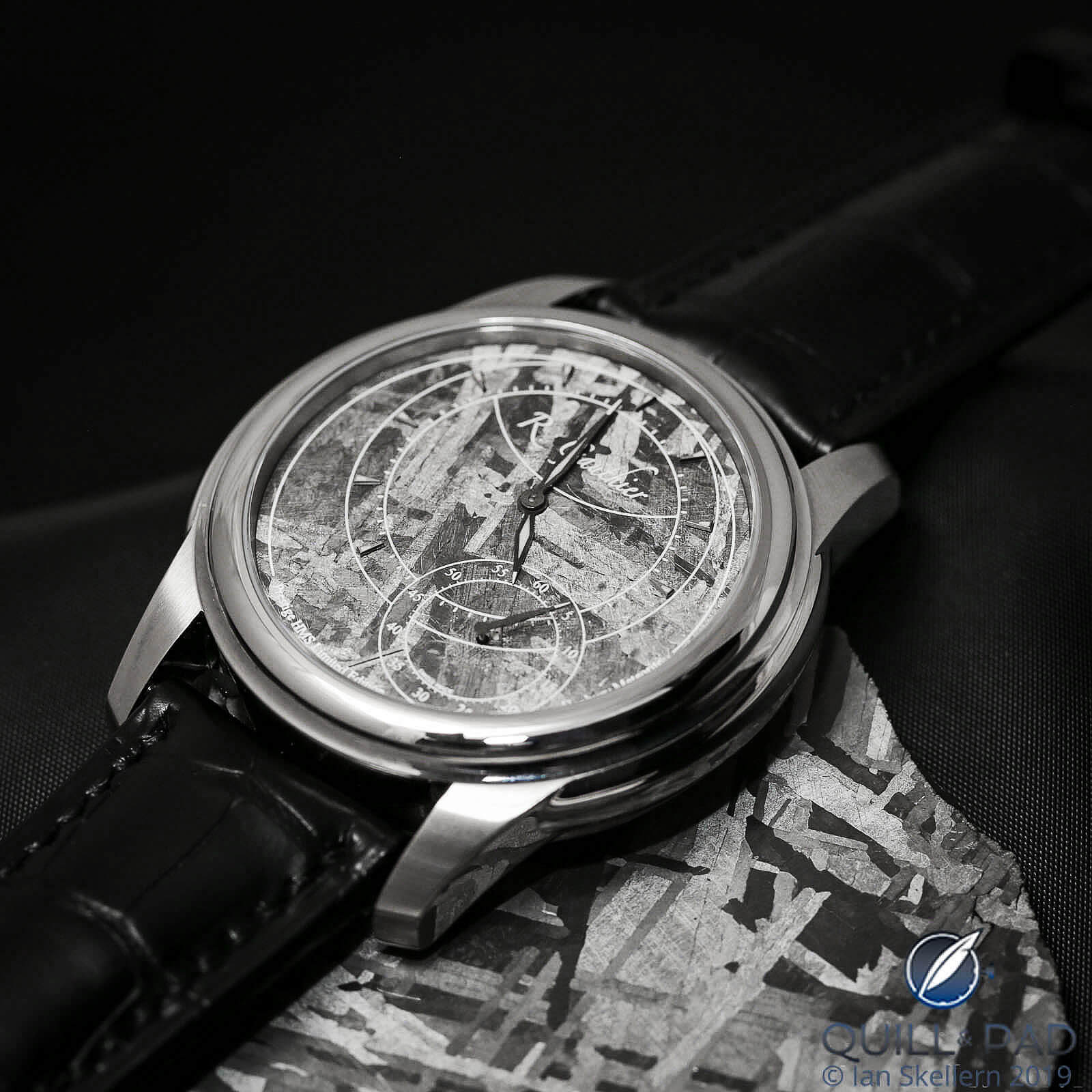
Romain Gauthier Prestige HMS in stainless steel with Henbury meteorite dial
Yet, Gauthier now releases a new ten-piece limited edition version of his Prestige HMS in a stainless steel case. And here its use is meant to underscore the rarity of the watch outfitted with an unusual Henbury meteorite dial.
Because Gauthier doesn’t generally encase his watches in steel, this ten-piece edition is doubly rare thanks to both the dial and the case. And as Joshua Munchow reminds us in Here’s Why: Stainless Steel Is The Most Precious Metal, it is hard to beat stainless steel as a case material in terms of performance.
Romain Gauthier Prestige HMS with Henbury meteorite dial
Meteorite is a rare material and though it has been used in watch dials, these are few and far between.
Meteorite is an iron-rich piece of rock from space that entered the earth’s atmosphere in a blaze of fire and light before hitting earth (the actual meteors burn up completely in the atmosphere and do not land). These flaming rocks are named for the locations in which they are found after they land, with this particular piece of iron meteorite discovered in 1931 at the Henbury crater field in Australia.
The other brands generally use sections from one of two meteorites called Gibeon and Muonionalusta, preferred because of their prominent Widmanstätten structures, which are the typical striations caused by the stone’s crystallization in space that become obvious once it is subjected to a chemical bath.
Before its chemical bath, meteorite normally looks like a relatively ordinary piece of grey metal.
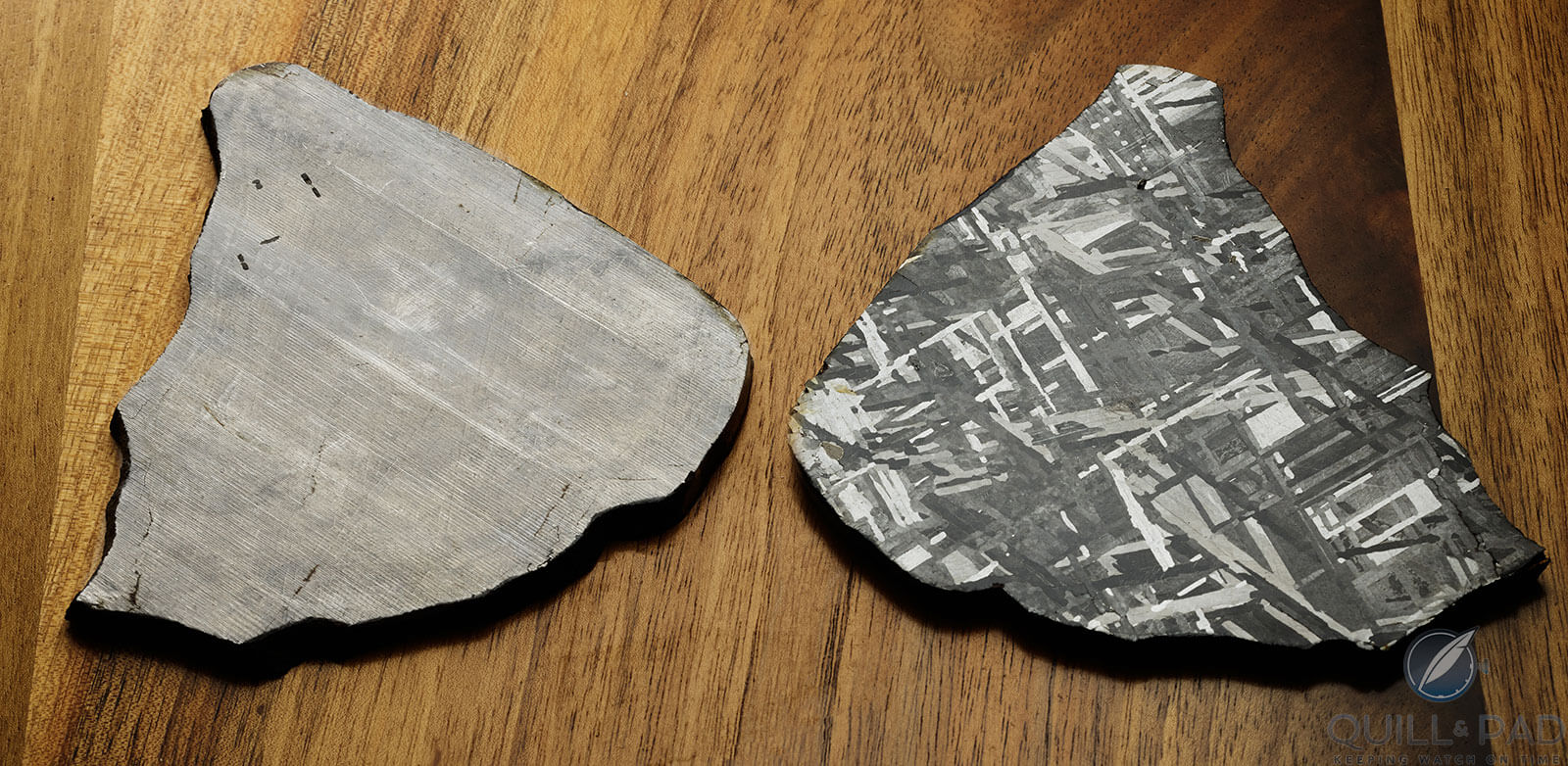
Henbury meteorite pieces before (left) and after nitric acid treatment in preparation for transformation into a dial for the Romain Gauthier Prestige HMS Meteorite
Only the Prestige HMS currently contains a piece of Henbury meteorite.
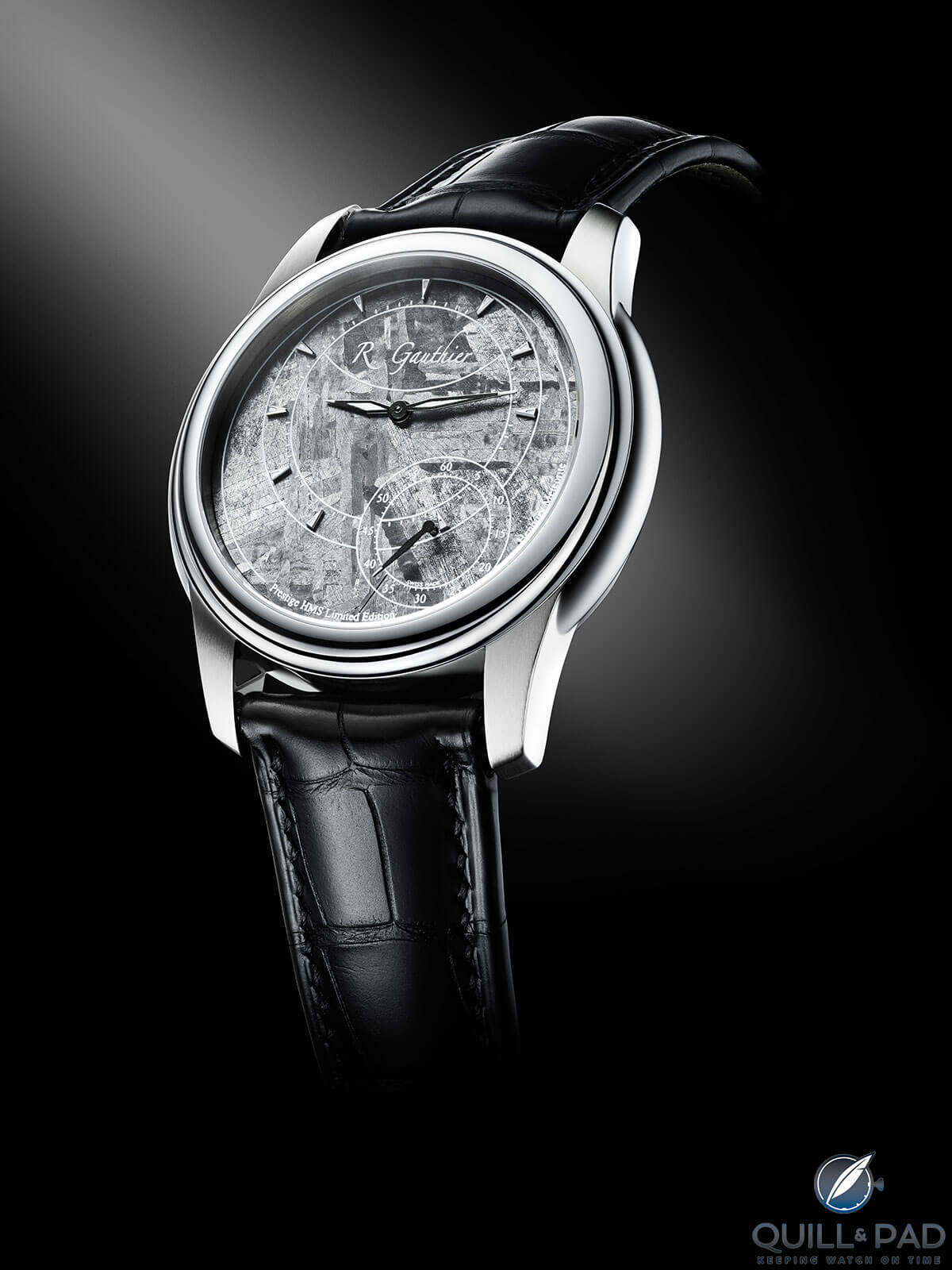
Romain Gauthier Prestige HMS in stainless steel with Henbury meteorite dial
“When I first set eyes on this meteorite, the size of its crystal bands and the way they reflect the light, I knew that it was something special,” Gauthier explained. “It really stood out from the other iron meteorites that we are used to seeing. Immediately my thoughts turned to how I could use it for a special-edition timepiece.”
Unlike the HMS Ten celebrating Romain Gauthier’s decade as watch brand, the new Prestige HMS uses its meteorite disk as a full dial, meaning there are no cutaways. Full dials like this are also unusual in the Gauthier lineup.

Romain Gauthier Prestige HMS in stainless steel with Henbury meteorite dial
The attractive dial is dominated by a configuration of circles that approximate the classic, round watch, but the off-center placement of the subdial for seconds – and resulting push to the side for the word arc “Prestige HMS Limited Edition” along the bottom – provide a great deal of visual interest. In other words, it makes a vanilla-ish time display into double chocolate with whipped cream, the cherry on top formed by the beautiful glint of the meteorite structures.
Blackened steel hands filled with luminescent Super-LumiNova combined with white gold applied and lumed hour markers make for eminently legible displays.
The difficulty of making meteorite into a dial
I am particularly partial to the use of meteorite in watches because it’s literally the heart of a shooting star; when I gaze at a meteorite dial, I see a tamed piece of heaven displaying the eternal rotation of time passing.
How a “piece of space rock” like this becomes a beautiful dial gracing the wrist of a connoisseur is part of an art form rarely seen in watchmaking.
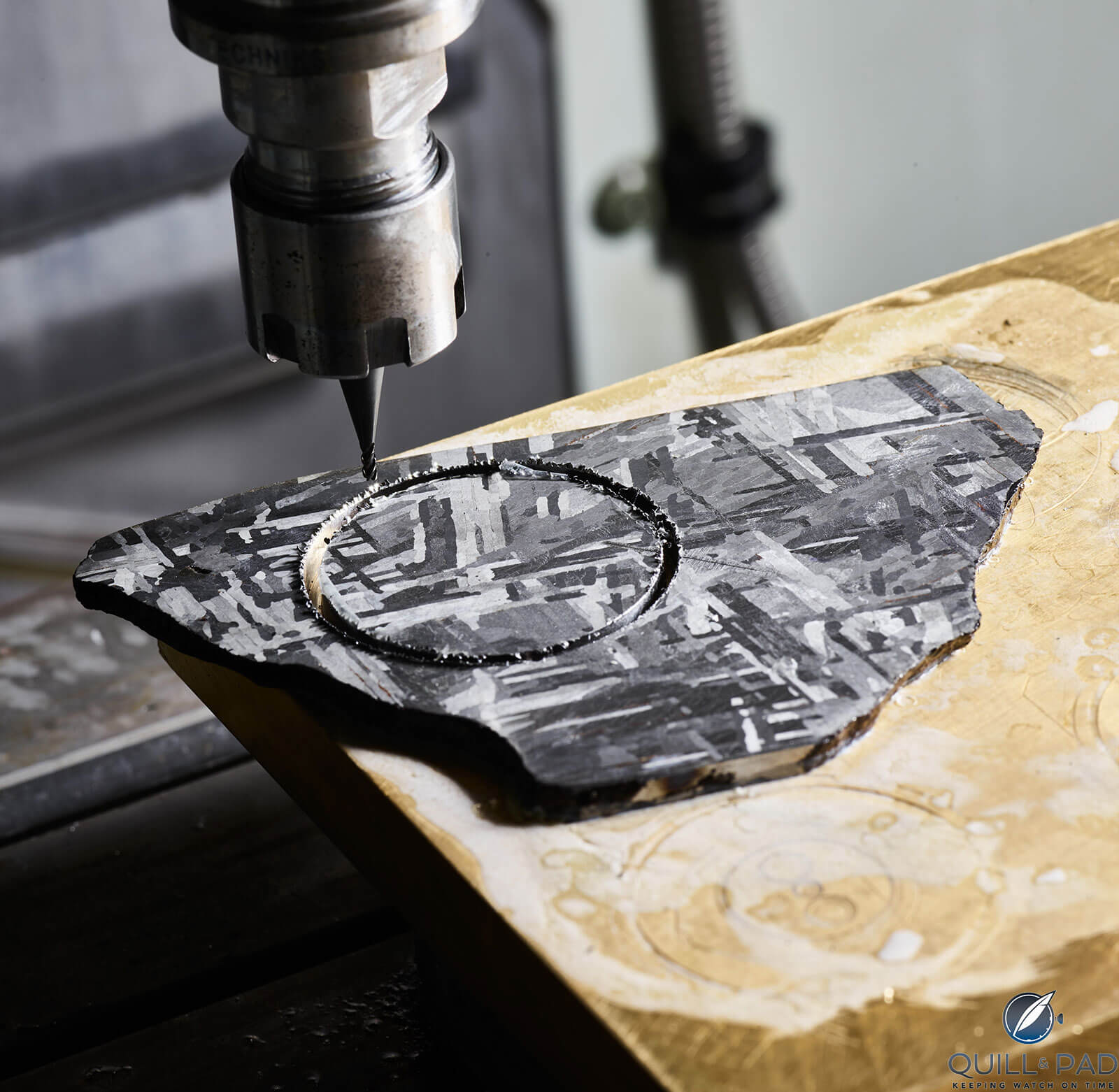
Cutting a dial blank from a piece of the Henbury meteorite dial for the Romain Gauthier Prestige HMS Meteorite
The first step is to scope out the part of the stone that would make for the most beautiful dial. The crystal bands, as Gauthier called them, can look much different in various areas of the rock, and it takes a highly trained eye to choose just the right cut for a dial that highlights the beauty of the material just so.
After the best cut has been determined, the stone goes through a series of processes to make it into a dial: cutting to the approximate shape and thickness using a three-axis CNC machine is a first step that is rather time-consuming.
Then it is ground flat. Although it may sound simple, just the initial grinding of the material can take weeks due to its brittleness, and this step requires great care. After that, an anti-corrosion treatment is applied so that the stone’s appearance does not deteriorate over time – the meteorite is rich in iron, and iron rusts.
The nascent dial is then cemented to a brass work plate, after which it is ground perfectly smooth. This is also a tedious process as tolerances must be precise. After this, the piece is again finely ground, polished on one side, and brought to the exact size of 33 mm in diameter and 0.8 mm in thickness.
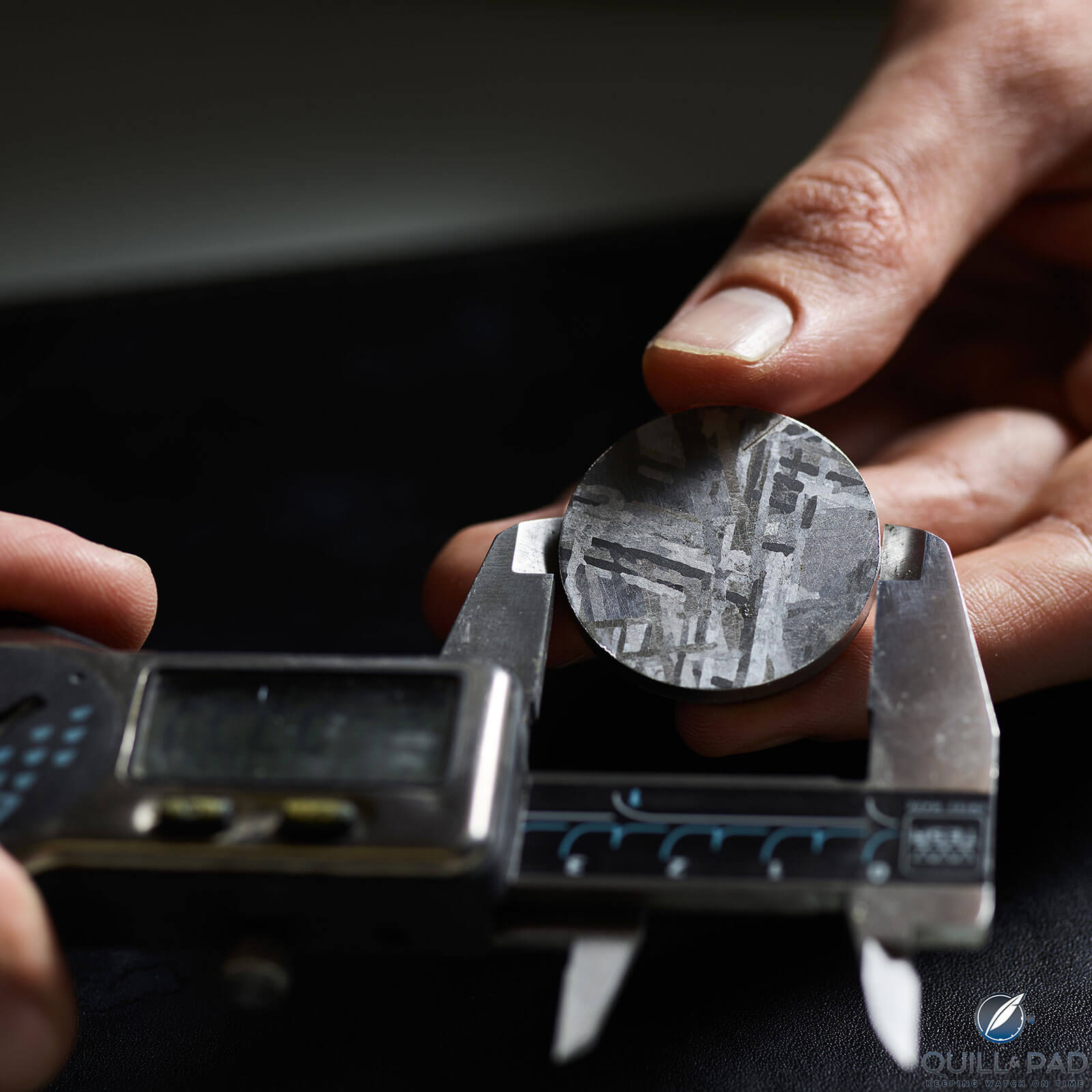
Measuring the the exact dimensions of a Henbury meteorite dial for the Romain Gauthier Prestige HMS Meteorite
Still on a work plate, the dial is then drilled to accommodate the applied hour markers and hand arbor.
After the appropriate holes have been made, the meteorite dial is once again polished to remove any blemishes created by drilling and it is then removed from the work plate. Any slips and the entire dial has to be discarded and the whole process repeated.
The Romain Gauthier Prestige HMS mechanics: ode to a crown
Perhaps the best example of the cool engineering that has gone into this seemingly normal watch – and one that doesn’t really hit the eye immediately, but takes a little while to register – is the fact that the crown is missing from its usual spot on the case band. This allows the design to fully unfold, becoming and remaining a perfect circle with nothing breaking its flow.
So where is the crown?
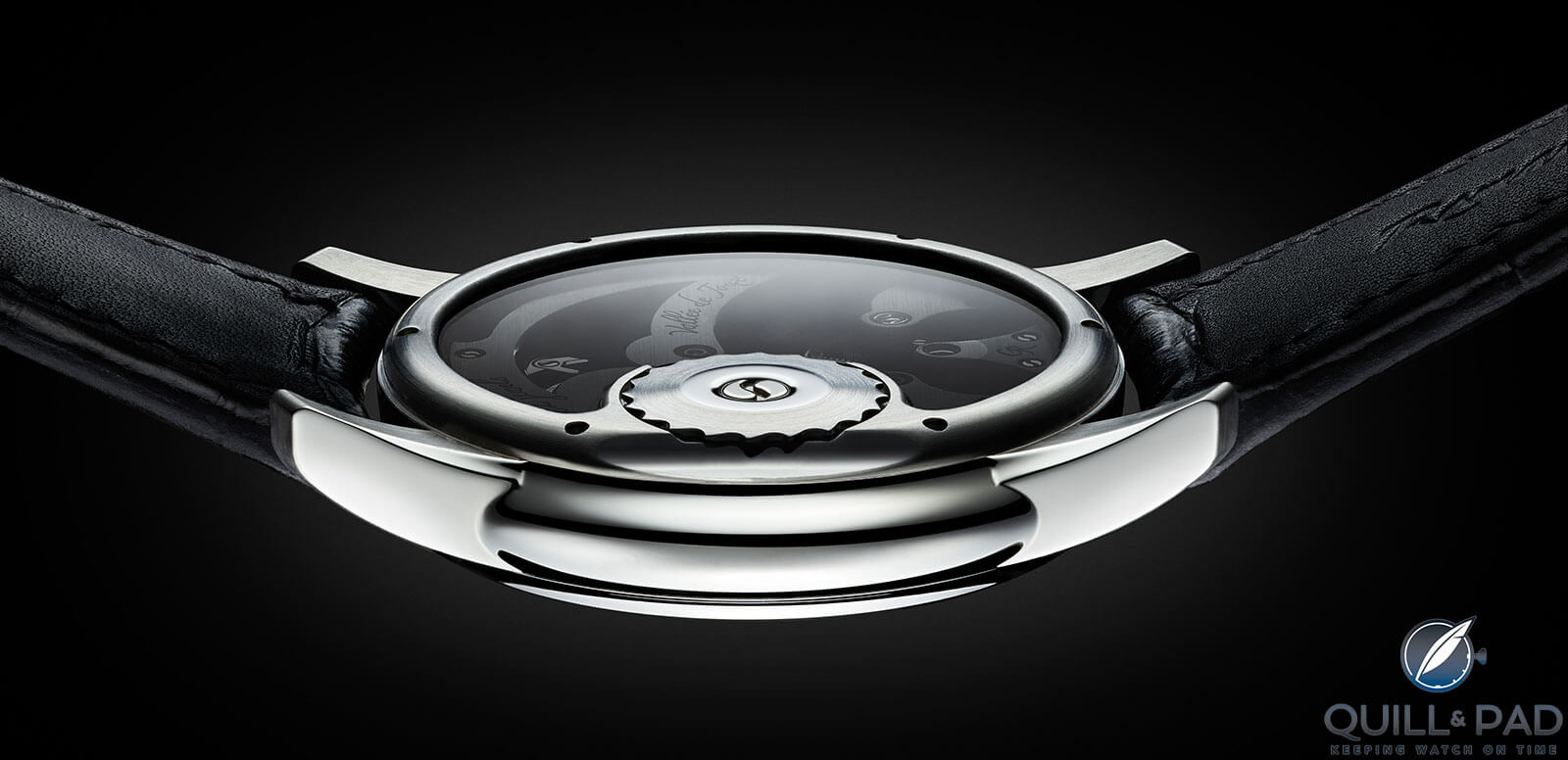
Flat crown on the back of the Romain Gauthier Prestige HMS Meteorite
It is flat on the case back. And here it not only enhances the design, but also increases winding efficiency as the energy does not need to be transmitted through a 90-degree angle as with a normal case band crown. Placement of the crown flat on the back also reduces wear on components.
Nonetheless, the large diameter and easy grippability of the crown element enables the watch to be easily wound, even while on the wrist.
Don’t be fooled by the first-glance normality of the off-center hours and minutes with seconds subdial tucked off to one side; this watch is anything but ordinary. The classic-yet-different aesthetics surrounded by a graceful 43 mm case shield the clever mechanics, which are thankfully fully showcased through the sapphire crystal on the case back with the visually seductive Vallée de Joux-style finger bridges in a black NAC-treated finish immediately attracting the eye.
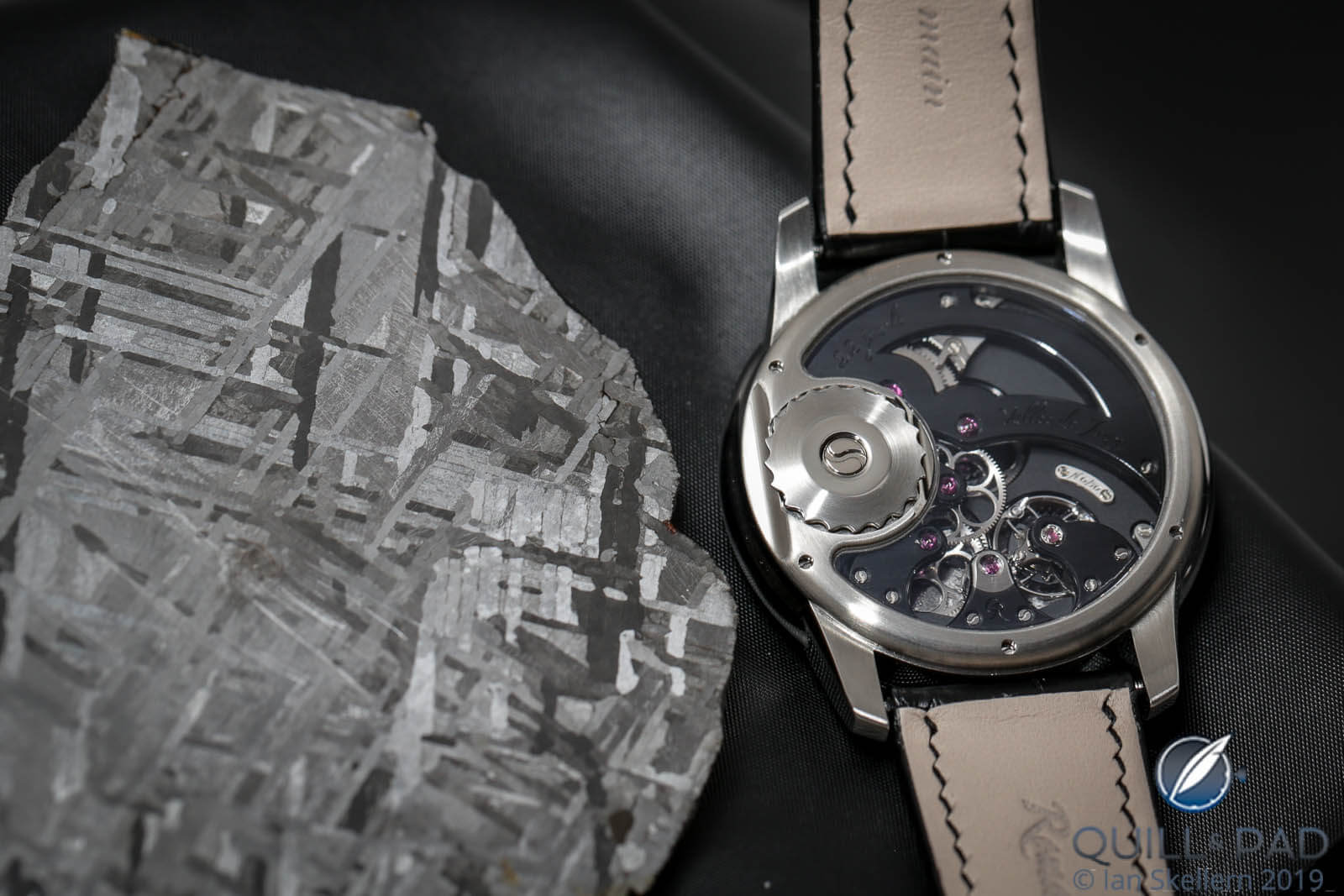
Back of the Romain Gauthier Prestige HMS Meteorite beside a piece of the Henbury meteorite from which the dial was crafted
The large movement bridge at the top includes a cutaway placing some of the mainspring barrel and ratchet click on display. The cutaway itself features four highly polished, sharp internal beveled angles – this anglage reveals proof of the superlative hand-finishing in evidence throughout the movement since machines are not yet capable of polishing sharp internal angles.
And then there’s the regulating organ: with its distinctive curved arms and calibrated eccentric weights, the balance wheel designed and manufactured by Romain Gauthier oscillates in perfect harmony with the escapement, which features a high-efficiency triangular pallet lever – another Romain Gauthier invention.
As Gauthier’s very limited products are the result of his mixed background and training – a juxtaposition of engineering and watchmaking with a little (or a lot) Philippe Dufour-style finishing thrown in for good measure – it would be folly to expect anything less than perfection in terms of functionality and finishing.
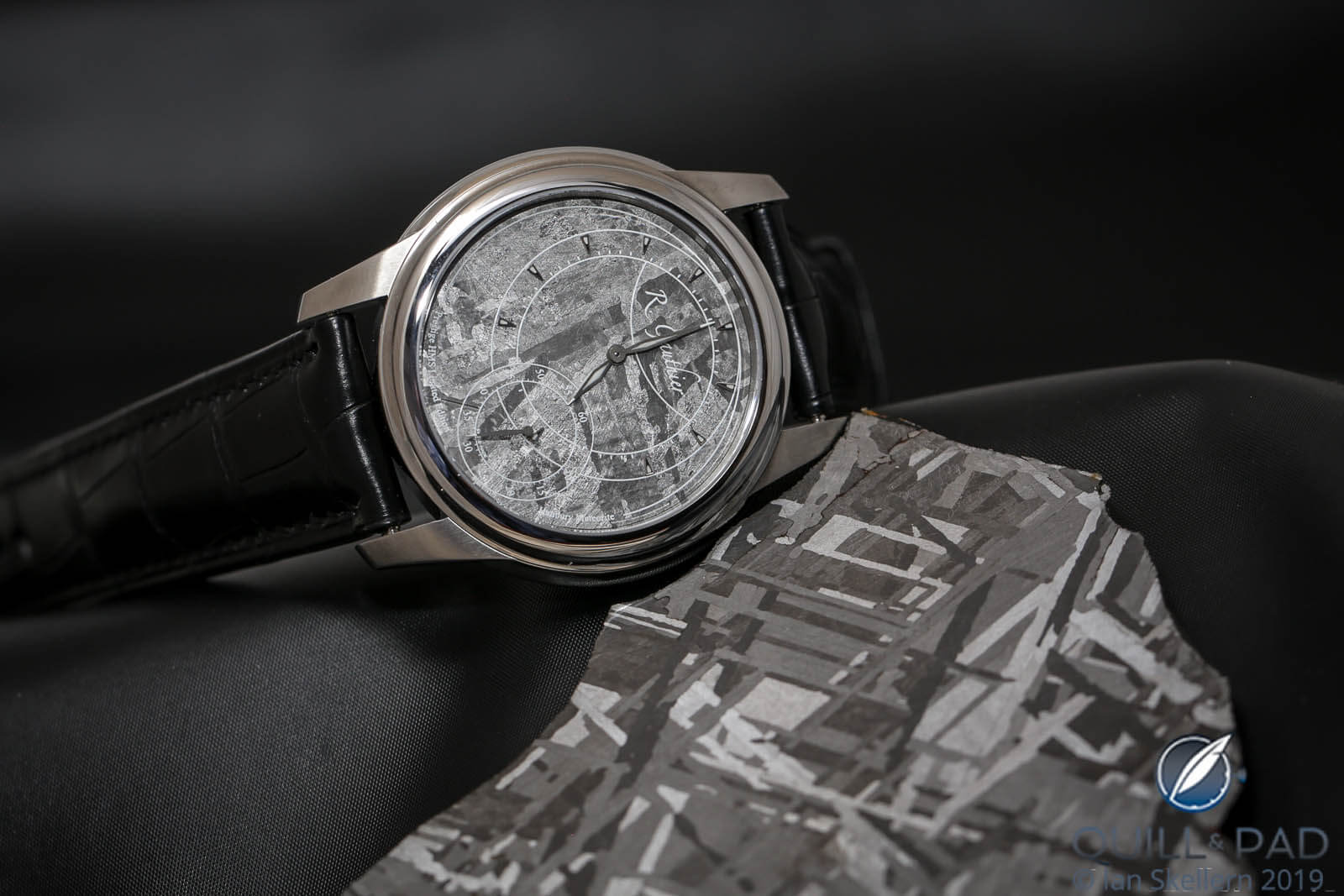
Romain Gauthier Prestige HMS in stainless steel with Henbury meteorite dial
The Prestige HMS with meteorite dial (like most of Romain Gauthier’s timepieces) displays the time within a contemporary, no-distraction setting and boasts some of the very best hand-finishing available.
With the exception of the mainspring, balance spring and jewels, the entire hand-wound, perfectly finished, and expertly designed caliber is designed, manufactured, and assembled in Romain Gauthier’s Le Sentier workshop.
For more information, please visit www.romaingauthier.com/freedom/prestige-hms.
Quick Facts Romain Gauthier Prestige HMS with Henbury meteorite dial
Case: 43 x 12.1 mm; stainless steel, flat crown on case back
Movement: manually wound Caliber 2206 HMS, 4 Hz/28,800 vph frequency, 60 hours of power reserve, black NAC-treated bridges; exceptional finishing
Functions: hours, minutes, seconds
Limitation: 10 pieces
Price: 68,000 Swiss francs (without tax)
You may also enjoy:
Romain Gauthier Celebrates Ten-Year Anniversary With HMS Ten
Here’s Why The Crown Is The Unsung Hero Of Watchmaking (And Why Rolex Wears The Crown)



Leave a Reply
Want to join the discussion?Feel free to contribute!